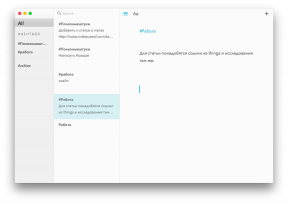“User Experience Design (UX-UI Design)” - course RUB 28,000. from MSU, training 3 weeks. (1 month), Date: November 28, 2023.
Miscellaneous / / November 28, 2023
This course reveals the essence of the concepts of UX and UI: the approaches of User Experience (UX) designers and user interface (UI) designers. Particular attention is paid to taking into account user psychology when designing interfaces. Discusses issues of data-driven design; development and visualization of concepts; testing and transforming concepts.
Duration of training – 36 hours (24 hours of classroom training, 12 hours of independent study of materials).
Class format - full-time, if it is impossible to attend in person - the ability to connect to the lesson via video conference.
Cost of education - 28,000 rubles.
Start of classes - autumn 2023 academic year.
Training agreements are concluded with individuals and legal entities.
Registration for courses is carried out by email [email protected] or through the registration form on the website.
You can contact the course administrator, Anton Martyanov, to register or with questions via WhatsApp or Telegram: +79264827721.
Section 1. UX/UI principles of solution design.
Topic 1.1 Psychology of human perception:
- features of visual communication: principles of Gestalt;
- features of decision making: Hicks' law;
- Features of sensory-motor processes: Fitts' law.
Topic 1.2. Characteristics of a “convenient” service or product:
- user experience as a criterion for product success;
- use cases;
- the concept of a “user-friendly” interface: examples of interface design.
Section 2. UX research and analytics tools.
Topic 2.1. Types of research:
- qualitative and quantitative research;
- behavioral and attitude research towards a product/phenomenon;
- moderated and unmoderated studies.
Topic 2.2. Basic UX analytics tools:
- surveys: options for places to collect information, construction of surveys;
- in-depth interviews: principles of conducting and constructing individual user interviews to clarify his personal motivation, perception of a particular situation;
- СustomerPersona (user portrait): visualization of consumer segments by behavior, problems, desires, emotions, pains and contexts;
- user diaries: a log with all the user's actions and emotions for the day, which gives insight into user behavior and needs and helps define feature requirements product/service;
- creating user stories: visualizing the contexts in which the user interacts with the product/service;
- Point-of-View: taking a point of view of the problems that need to be solved;
- usability testing: testing the product/service on users, collecting feedback;
- A/B test: a randomized experiment to identify the best interface option.
Topic 2.3. Selection of research methods:
- selecting an audience group for research;
- search for participants and their selection;
- principle of constructing questions: features of communication with research participants to obtain objective data;
Section 3. Creating a Customer Experience Map (CJM).
Topic 3.1. The main goals of creating a consumer journey map:
- creating empathy for the consumer;
- involvement of the project team;
- search for growth points.
Topic 3.2. Selecting a custom context for visualization on the map:
- formulation of basic user tasks – Jobs-to-be-done;
- distribution of the reflected stages of interaction between the consumer and the product/service.
Topic 3.3. Designing a Customer Experience Map (CJM):
- Actions performed at the stages of interaction with a product/service;
- The emotional state of the consumer, his thoughts and impressions;
- Points of contact between the brand and the consumer;
- Application of the obtained data.
Address
119991, Moscow, st. Leninskie Gory, 1, bldg. 51, 5th floor, room 544 (Dean's office)
University



